Bowling
Bowling is a target sport and recreational activity in which a player rolls a ball toward pins (in pin bowling) or another target (in target bowling). The term bowling usually refers to ten-pin bowling, though in the United Kingdom and Commonwealth countries bowling could also refer to lawn bowls.
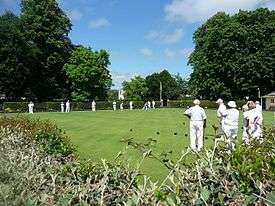
In pin bowling, the goal is to knock over pins on a long playing surface known as a lane. A strike is achieved when all the pins are knocked down on the first roll, and a spare is achieved if all the pins are knocked over on a second roll.
Lanes have a wood or synthetic surface onto which protective lubricating oil is applied in different specified oil patterns that vary ball path trajectories and characteristics. Common types of pin bowling include ten-pin, candlepin, duckpin, nine-pin, five-pin and kegel. The historical game skittles is the forerunner of modern pin bowling.
In target bowling, the aim is usually to get the ball as close to a mark as possible. The surface in target bowling may be grass, gravel, or synthetic.[1] Lawn bowls, bocce, carpet bowls, pétanque, and boules may have both indoor and outdoor varieties.
Bowling is played by 100 million people in more than 90 countries (including 70 million in the United States alone),[2] and is the subject of video games.
Variations
Bowling games can be distinguished into two general classes, pin bowling and target bowling.
Pin bowling
Scale: the horizontal blue lines are one inch (2.5 cm) apart vertically.
Five main variations are found in North America, with ten-pin being the most common but others being practiced in the eastern U.S. and in parts of Canada:[3]
- Ten-pin bowling: largest and heaviest pins, and bowled with a large ball with three finger holes.
- Nine-pin bowling: pins usually attached to strings at the tops, uses a ball without finger holes.
- Candlepin bowling: tallest pins (at 40 cm or 16 in), thin with matching ends, bowled with the smallest and lightest (at 1.1 kg or 2.4 lb) handheld ball of any bowling sport, and the only form with no fallen pins removed during a frame.
- Duckpin bowling: short, squat, and bowled with a handheld ball.
- Five-pin bowling: tall, between duckpins and candlepins in diameter with a rubber girdle, bowled with a handheld ball, mostly found in Canada.
Target bowling
Another form of bowling is usually played outdoors on a lawn. At outdoor bowling, the players throw a ball, which is sometimes eccentrically weighted, in an attempt to put it closest to a designated point or slot in the bowling arena.
History
Ancient history
The earliest known forms of bowling date back to ancient Egypt,[5] with wall drawings depicting bowling being found in a royal Egyptian tomb dated to 5200 B.C.[6] and miniature pins and balls in an Egyptian child's grave about 5200 B.C.[7] Remnants of bowling balls were found among artifacts in ancient Egypt going back to the Egyptian protodynastic period in 3200 BC.[8] What is thought to be a child's game involving porphyry (stone) balls, a miniature trilithon, and nine breccia-veined alabaster vase-shaped figures—thought to resemble the more modern game of skittles—was found in Naqada, Egypt in 1895.[4]
Balls were made using the husks of grains, covered in a material such as leather, and bound with string. Other balls made of porcelain have also been found, indicating that these were rolled along the ground rather than thrown due to their size and weight.[8] Some of these resemble the modern day jack used in target bowl games. Bowling games of different forms are also noted by Herodotus as an invention of the Lydians in Asia Minor.[9]
About 2,000 years ago, in the Roman Empire, a similar game evolved between Roman legionaries entailing the tossing of stone objects as close as possible to other stone objects, which eventually evolved into Italian Bocce, or outdoor bowling.[10]
Around 400 AD, bowling began in Germany as a religious ritual to cleanse oneself from sin by rolling a rock into a club (kegel) representing the heathen, resulting in bowlers being called keglers.[11]
Post-classical history
In 1299, the oldest-surviving known bowling green for target style bowling was built: Master's Close (now the Old Bowling Green of the Southampton Bowling Club) in Southampton, England, which is still in use.[12]
In 1325, laws were passed in Berlin and Cologne that limited bets on lawn bowling to five shillings.[11]
In 1366, the first official mention of bowling in England was made, when King Edward III banned it as a distraction to archery practice.[13]
In the 15th-17th centuries, lawn bowling spread from Germany into Austria, Switzerland, and the Low Countries, with playing surfaces made of cinders or baked clay.[11]
In 1455, lawn bowling lanes in London were first roofed-over, turning bowling into an all-weather game.[11] In Germany, they were called kegelbahns, and were often attached to taverns and guest houses.
In 1463, a public feast was held in Frankfurt, Germany, with a venison dinner followed by lawn bowling.[11]
Modern history
In the 16th to 18th centuries
In 1511, English King Henry VIII was an avid bowler. He banned bowling for the lower classes and imposed a levy for private lanes to limit them to the wealthy.[14] Another English law, passed in 1541 (repealed in 1845), prohibited workers from bowling, except at Christmas, and only in their master's home and in his presence. In 1530 he acquired Whitehall Palace in central London as his new residence, having it extensively rebuilt complete with outdoor bowling lanes, indoor tennis court, jousting tiltyard, and cockfighting pit.
Protestant Reformation founder Martin Luther set the number of pins (which varied from 3 to 17) at nine. He had a bowling lane built next to his home for his children, sometimes rolling a ball himself.[11]
On 19 July 1588, English Vice-Admiral Sir Francis Drake allegedly was playing bowls at Plymouth Hoe when the arrival of the Spanish Armada was announced, replying "We have time enough to finish the game and beat the Spaniards too."[15]
In 1609, Dutch East India Company explorer Henry Hudson discovered Hudson Bay, bringing Dutch colonization to New Amsterdam (later New York); Hudson's men brought some form of lawn bowling with them.[11]
In 1617, English King James I published Declaration of Sports, banning bowling on Sundays but permitting dancing and archery for those first attending an Anglican service, outraging Puritans; it was reissued in 1633 by his successor Charles I, then ordered publicly burned in 1643 by the Puritan Parliament.
In 1670, Dutchmen liked to bowl at the Old King's Arms Tavern near modern-day 2nd and Broadway in New York City.[16]
In 1733, Bowling Green in New York City was built on the site of a Dutch cattle market and parade ground, becoming the city's oldest public park to survive to modern times.
In the 19th century
A painting from around 1810 shows British bowlers playing a bowling sport outdoors. It shows a triangular formation of ten pins chronologically before it appeared in the United States.[19]
In 1819, New York writer Washington Irving made the first mention of ninepin bowling in American literature in his story Rip Van Winkle.
Newspaper articles and advertisements at least as early as 1820[17] refer to "ten pin alleys", usually in the context of a side attraction to a main business or property[20][21][22][23] as distinguished from dedicated "bowling alley" establishments as presently understood.
On 1 January 1840, Knickerbocker Alleys in New York City opened, becoming the first indoor bowling alley.[24]
In 1846, the oldest surviving bowling lanes in the United States were built as part of Roseland Cottage, the summer estate of Henry Chandler Bowen (1831-1896) in Woodstock, Connecticut. The lanes, now part of Historic New England's Roseland Cottage House Museum contain Gothic Revival architectural elements in keeping with the style of the entire estate.[25]
In 1848, the Revolutions of 1848 resulted in accelerated German immigration to the U.S., reaching 5 million by 1900, bringing their love of beer and bowling with them; by the late 19th century they made New York City a center of bowling.
In 1848, the Scottish Bowling Association for lawn bowling was founded in Scotland by 200 clubs; it was dissolved then refounded in 1892.
In 1864, Glasgow cotton merchant William Wallace Mitchell (1803–84) published Manual of Bowls Playing, which became a standard reference for lawn bowling in Scotland.[26]
In 1875, the National Bowling Association (NBA) was founded by 27 local clubs in New York City to standardize rules for ten-pin bowling, setting the ball size and the distance between the foul line and the pins, but failing to agree on other rules; it was superseded in 1895 by the American Bowling Congress.[27]
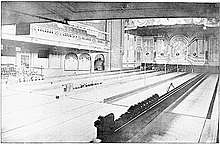
In 1880, Justin White of Worcester, Massachusetts invented Candlepin Bowling.
In the 1880s, Brunswick Corporation (founded 1845) of Chicago, Illinois, maker of billiard tables began making bowling balls, pins, and wooden lanes to sell to taverns installing bowling alleys.
On 9 September 1895, the modern standardized rules for ten-pin bowling were established in New York City by the new American Bowling Congress (ABC) (later the United States Bowling Congress), who changed the scoring system from a maximum 200 points for 20 balls to a maximum 300 points for 12 balls, and set the maximum ball weight at 16 lb (7.3 kg), and pin distance at 12 in (30 cm). The first ABC champion (1906-1921) was Jimmy Smith (1885-1948).[29] In 1927 Mrs. Floretta "Doty" McCutcheon (1888-1967) defeated Smith in an exhibition match, founding a school that taught 500,000 women how to bowl.[30][31][32] In 1993 women were allowed to join the ABC. In 2005 the ABC merged with the Women's International Bowling Congress (WIBC) et al. to become the United States Bowling Congress (USBC).
In the early 1890s, Duckpin bowling was invented in Boston, Massachusetts, spreading to Baltimore, Maryland about 1899.
In the 20th century
In 1903, the English Bowling Association was founded by cricketer W. G. Grace. On 1 January 2008, it merged with the English Women's Bowling Association to become Bowls England.
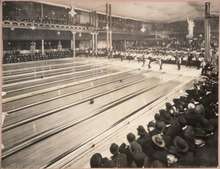
In 1903, D. Peifer of Chicago, Illinois invented a handicap method for bowling.[33]
In 1905, Rubber Duckpin bowling was invented by Willam Wuerthele of Pittsburgh, Pennsylvania, catching on in Quebec, Canada.
The ABC initially used bowling balls made of Lignum vitae hardwood from the Caribbean, which were eventually supplanted by the Ebonite rubber bowling ball in 1905 and the Brunswick Mineralite rubber ball[34] by 1909.[35] Columbia Industries, founded in 1960, was the first manufacturer to successfully use polyester resin ("plastic") in bowling balls.[36] In 1980, urethane-shell bowling balls were introduced by Ebonite.
Rules for target bowls evolved separately in each of the other countries that adopted the predominantly British game. In 1905, the International Bowling Board was formed;[37] its constitution adopted the laws of the Scottish Bowling Association, with variations allowed at the individual country level.[38]
In September 1907, the Victorian Ladies' Bowling Association was founded in Melbourne, Victoria, Australia, becoming the world's first women's lawn bowling association.
In 1908, the now-oldest surviving bowling alley for the tenpin sport was opened in Milwaukee, Wisconsin, in the basement of the Holler House tavern, containing the oldest sanctioned lanes in the United States.
In 1909, the first ten-pin bowling alley in Europe was installed in Sweden, but the game failed to catch on in the rest of Europe until after World War II. Meanwhile, ten-pin bowling caught on in Great Britain after hundreds of bowling lanes were installed on U.S. military bases during World War II.[11]
In 1913, the monthly Bowlers Journal was founded in Chicago, Illinois, continuing to publish to the present day.
In late 1916, the Women's International Bowling Congress (originally the Woman's National Bowling Association) was founded in Saint Louis, Missouri, merging with the United States Bowling Congress in 2005.
In 1920-1933 Prohibition in the U.S. caused bowling alleys to disassociate from saloons, turning bowling into a family game and encouraging women bowlers.[32]
On 2 October 1921, the annual Petersen Open Bowling Tournament (a.k.a. The Pete) was first held in Chicago, Illinois, becoming bowling's richest tournament of the day. In 1998, it was taken over by AMF.[39]
In 1926, the International Bowling Association (IBA) was formed by the United States, Sweden, Germany, Netherlands, and Finland, holding four world championships by 1936.[11]
On 21 March 1934, the National Bowling Writers Association was founded in Peoria, Illinois, by four bowling journalists; it changed its name in 1953 to the Bowling Writers Association of America.[40]
In August 1939, the National Negro Bowling Association was founded in Detroit, Michigan, dropping Negro from the title in 1944 and opening membership to all races. It reached 30,000 members in 2007.[41]
In 1942, the Bowling Proprietors Association of America (BPAA) held its first BPAA All-Star tournament.
In 1947, the Australian Women's Bowling Council was founded. It held the first Australian women's national lawn bowling championship in Sydney in 1949, which was won by Mrs. R. Cranley of Queensland.
On 18 April 1948, the Professional Women Bowling Writers (PWBW) was founded in Dallas, Texas, admitting men in 1975. On 1 January 2007, it merged with the Bowling Writers Association of America.[42]
In 1950, following extensive lobbying by civil rights groups in the wake of the 1947 integration of Major League Baseball, the American Bowling Congress opened its membership to African Americans and other minorities.[43] The WIBC followed suit the following year.[41]
About 1950, the Golden Age of Ten-Pin Bowling began, in which professional bowlers made salaries rivaling those of baseball, football, and hockey players; this ended in the late 1970s.
In 1951, the first ABC Masters tournament was held, becoming one of the four majors by 2000.
In 1952, the Fédération Internationale des Quilleurs (FIQ) was founded in Hamburg, Germany, to coordinate international amateur competition in nine-pin and ten-pin bowling. In 1954, the first FIQ World Bowling Championships were held in Helsinki, Finland. In 1979, the International Olympic Committee recognized it as the official world governing body for bowling. It changed its name to World Bowling in 2014.
In 1952, American Machine and Foundry (AMF) of Brooklyn, N.Y., began marketing automatic Pinsetter machines. This eliminated the need for pinboys and caused bowling to rocket in popularity, making the 1950s the Decade of the Bowler.
In 1954, Steve Nagy (1913-1966) became the first person to bowl a perfect 300 game on TV on NBC-TV's "Championship Bowling".[44][45] The PBA later named its sportsmanship award after him.
In 1958, the Professional Bowlers Association (PBA) was founded in Akron, Ohio by 33 prominent bowlers (including Don Carter, Dick Weber, Dick Hoover, Buzz Fazio, Billy Welu, Carmen Salvino and Glenn Allison) after they listened to a presentation by sports agent Eddie Elias. The PBA eventually reached about 4,300 members in 14 countries worldwide. In 1975, Earl Anthony became the first PBA member with $100,000 yearly earnings, and the first to reach $1,000,000 total earnings in 1982. In 2000, it was purchased by former executives of Microsoft, who moved the PBA headquarters to Seattle, Washington.
On 28 November 1960, the first PBA Championship in Memphis, Tennessee was won by Don Carter. It was renamed the PBA World Championship in 2002, and now awarded the Earl Anthony Trophy to the winner.
In 1960, the Professional Women's Bowling Association (PWBA) was founded as the first professional women's bowling association; it went defunct in 2003.
In 1960, the National Bowling League (NBL) was founded to compete with the PBA. It attracted name players such as Billy Welu and Buzz Fazio, but failed to sign top star Don Carter. The league's failure to get a TV contract caused it to fold following its first championship in 1962.
On 27 January 1962,[46] ABC Television aired its first Saturday afternoon broadcast of a PBA Tour event, the Empire State Open held at Redwood Lanes in Albany, New York,[47] beginning a partnership between ABC and the PBA that lasted through 1997. The Saturday afternoon bowling telecasts garnered very good ratings through the early 1980s, until the cable television-fueled explosion of sports viewing choices caused ratings to decline.
In 1962, the first PBA Tournament of Champions was held; it became an annual event in 1965, and was sponsored by Firestone Tire from 1965 through 1993.
In 1962, the American Wheelchair Bowling Association (AWBA) was founded in Louisville, Kentucky, by Richard F. Carlson.[48]
Between 3 and 10 November 1963, the Fifth FIQ World Bowling Championships in Mexico City, Mexico, were attended by 132 men and 45 women (first time) from 19 nations. It featured the debut of Team USA, which won seven of the eight gold medals.[49]
On 25 November 1963, Sports Illustrated published the article A Guy Named Smith Is Striking It Rich, revealing that PBA stars made more money than other professional sports stars, for "with more than $1 million in prizes to shoot for, the nation's top professional bowlers are rolling in money."[50] This was short-lived, however, for although the number of bowling alleys in the U.S. zoomed from 65,000 in 1957 to 160,000 in 1962, the U.S. bowling industry boom hit a brick wall in 1963. This was compensated, however, by a new boom in Europe and Japan, making 10-pin bowling an international sport.[51]
In 1964, "Mr. Bowling" Don Carter became the first athlete to sign a $1 million endorsement contract: a multi-year deal with Ebonite International.
In 1964, Marion Ladewig, a 9-time winner of the Bowling Writers Association of America's Female Bowler of the Year Award, became the first Superior Performance inductee into the WIBC Hall of Fame.
In 1965, the AMF Bowling World Cup was established by the FIQ.
On 27 January 1967, the Japan Professional Bowling Association (JPBA) was founded in Tokyo, Japan.
In 1971, the BPAA All-Star tournament was renamed the BPAA U.S. Open, and officially became one of the PBA's major tournaments.
In 1978, National Negro Bowling Association pioneer J. Elmer Reed (1903–83) became the first African-American to be inducted into the ABC Hall of Fame.[52]
On 16 December 1979, Willie Willis won the Brunswick National Resident Pro Tournament in Charlotte, North Carolina, becoming the first African-American bowling champion in the PBA in a non-touring event. In 1980, he became the first African-American in the Firestone Tournament of Champions, placing 13th.[53]
On 27 February 1982, Earl Anthony won the Toledo Trust PBA National Championship, becoming the first bowler to reach $1 million in career earnings.
In 1982, the Young American Bowling Alliance was formed from a merger of the American Junior Bowling Congress, the Youth Bowling Association, and the collegiate divisions of the ABC and WIBC.[54]
In 1982, the 1982 Commonwealth Games in Brisbane, Australia, added women's bowls to the events.
On 1 July 1982, former PBA pro Glenn Allison rolled the first 900 series (three consecutive 300 games in a three-game set) to ever be submitted to the ABC for award consideration. The ABC, however, refused to certify the score, citing non-complying lane conditions.[55]
On 22 November 1986, George Branham III (born 1962) became the first African-American to win a PBA national touring event: the Brunswick Memorial World Open in Chicago, Illinois.
On 18 September 1988, the 1988 Summer Olympics in Seoul, South Korea, featured ten-pin bowling as a demonstration sport.
On 2 August 1991, in Havana, Cuba, tenpin bowling became an international medal-level sport for the first time at the 1991 Pan American Games, and continues to this day.
In the 1992–1993 season, the ABC introduced resin bowling balls, causing perfect 300 scores to increase by 20%.[56]
In 1995, the first Best Bowler ESPY Award was presented.
In 1995, the National Bowling Stadium opened in Reno, Nevada, becoming known as the Taj Mahal of Tenpins.
On 2 February 1997, Jeremy Sonnenfeld (born 1975) bowled the first officially sanctioned 900 series of three straight perfect 300 games at Sun Valley Lanes in Lincoln, Nebraska, becoming known as "Mr. 900".[57]
In 1998, the World Tenpin Masters 10-pin bowling tournament was established.
In 2000, the Weber Cup, named after Dick Weber, was established as 10-pin bowling's equivalent to golf's Ryder Cup, with Team USA playing Team Europe in a 3-day match.
In the 21st century
On 31 March 2004, Missy Bellinder (1981-) (later Parkin) became the first female member of the PBA.[58] The PBA had opened up its membership to women following the 2003 demise of the PWBA. One year later, Liz Johnson became the first woman to make the televised final round of a PBA Tour event.[59]
In 2004, the Brunswick Euro Challenge was founded for amateur and pro 10-pin bowling players from Europe, Asia, and the U.S.[60]
On 24 January 2010, Kelly Kulick (1977-) became the first woman to win the PBA Tournament of Champions and the first woman to win a PBA national tour event.
In November 2012, after league bowling dropped from 80% to 20% of their business, AMF Bowling Centers of Richmond, Virginia filed for Chapter 11 bankruptcy for the second time (first in 2001), merging in 2013 with upscale New York-based bowling center operator Bowlmor (which didn't support league bowling) in an attempt to turn league bowling around, growing from 276 centers in 2013 to 315 in 2015.
In 2013, the PBA League was founded, composed of eight permanent 5-person teams, with an annual draft.[61]
In 2015, the Professional Women's Bowling Association (PWBA) was revived after a 12-year hiatus.[62]
Equipment
Ball
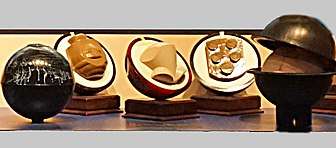
Bowling balls vary, depending on the type of bowling game. Ten-pin balls are large, up to 27 inches (69 cm) in circumference and approximately 8.59 inches (21.8 cm) in diameter, and typically have three holes. The balls come in various weights from 6 to 16 lb (2.7 to 7.3 kg), with the size and spacing of the finger holes often smaller on lighter balls to accommodate smaller hands. Different kinds of balls are available for different styles of bowling. There are balls for hook shots and balls for bowling straight. The bowling balls meant for hook shots have different core shapes and different chemical covers. There are a few types of chemical covers that allow a bowling ball to hook more. One of these types of covers is a resin cover. This resin cover is designed to move and absorb the oil on the lane to create a path for the bowler where there is less oil, increasing the amount of hook of the bowling ball. Balls for other games vary, e.g., candlepin balls which fit in the palm of the hand need no holes. Unlike most sports, the ball can be different weights based upon the player.
Pins

Bowling pins are the target of the bowling ball in pin bowling variations. The size and shape of pins vary but are generally cylindrical and widens where the ball strikes the pin. Ten-pin bowling pins are the largest and heaviest, weighing 3 lb 6 oz (1.5 kg). Duckpins are shorter and squatter than standard tenpins and candlepins are the tallest at 15 3⁄4 in (40 cm), but only 2 15⁄16 in (7.5 cm) wide and 2 lb 8 oz (1.1 kg) in weight.
Bowling pins are constructed by gluing blocks of rock maple wood into the approximate shape, and then turning on a lathe. After the lathe shapes the pin, it is coated with a plastic material, painted, and covered with a glossy finish. Because of the scarcity of suitable wood, bowling pins can be made from approved synthetics. Currently there are synthetic pins sanctioned for play in five-pin, duckpin, and candlepin. There is one synthetic ten pin model approved by the USBC. When hit by the ball, synthetic pins usually sound different from wooden pins.
Shoes
.jpg)
Bowling shoes are designed to mimic any style of flat shoe from regular dress shoes to athletic shoes. The sole of the non sliding foot is generally made of rubber to provide traction, while the sliding foot's sole is made of a smooth and flat material that allows a bowler to slide into the release with a rubber heel to allow for braking. Rental shoes are typically leather and rubber on both feet for durability. These shoes can be bought, but most casual players rent the shoes when visiting a facility. Players must be very careful while wearing them that the soft material does not get wet or excessively dirty; if it does get wet or dirty, it will not slide properly, and could damage the approach surface.[63]
Depending on the bowling center, shoe rental may be included in the cost of bowling or be added as a separate fee. To discourage theft, bowling shoes are often painted in highly distinctive patterns so that anyone who does steal them will not be able to wear the shoes in public without making the theft obvious.[64]
Accessibility
Technological innovation has made bowling accessible to members of the disabled community.
- The IKAN Bowler, a device designed by a quadriplegic engineer named Bill Miller, attaches to a wheelchair and allows the user to control the speed, direction, and timing of the ten-pin bowling ball's release. The name comes from the Greek work "ikano", which means "capable," or "enable." [65]
- For Bowls the sport has introduced a number of innovations to enable people with a disability to participate at all levels of the sport, from social through to Olympic Standards:
- The use of bowling arms and lifters enables bowlers to deliver a bowl minimising the amount of movement required
- Wheelchair and green manufacturers have produced modified wheel tyres and ramps to enable wheelchair athletes to access bowls greens
- Modified conditions of play as outlined in Disability classification in lawn bowls
In popular culture
With notable individuals
U.S. Presidents
- In 1948, two bowling lanes were installed in the ground floor of the West Wing of the U.S. Presidential residence, the White House, as a birthday gift for then-President Harry S. Truman.[66] The lanes were moved to the Old Executive Office Building (now the Eisenhower Executive Office Building) in 1955, for the benefit of White House employees;[67] its old location became a mimeograph room, and, much later, the White House Situation Room.[66] On 9 July 2014, the General Services Administration published, then quickly withdrew, a solicitation for bids to replace the Truman bowling lanes, which were deemed "irreparable" for not having had "any professional, industry standard maintenance, modifications, repairs or attention" for fifteen years.[67][68]
- In 1969, friends of then-President Richard M. Nixon, who was said to be an avid bowler, had a one-lane alley built in an underground space below the building's North Portico.[66] The one-lane bowling alley underwent major renovations in 1994, and again in 2019.[69]
Paintings
- A painting which dates from around 1810, and has been on display at the International Bowling Hall of Fame and Museum in St. Louis, Missouri (before its relocation on 26 January 2010, to the International Bowling Campus in Arlington, Texas), shows British bowlers playing the sport outdoors in the earliest known pictorial depiction of "ten-pin bowling" of any type, with a triangular formation of ten pins, chronologically before it appeared in the United States. A photograph of this painting appeared in the pages of the US-based "Bowler's Journal" magazine in 1988.[19]
- On 28 January 1950, the painting Bowling Strike by George Hughes (1907–1989)[70] appeared on the cover of the Saturday Evening Post.[71]
- In 1982, American expressionist painter LeRoy Neiman produced a famous painting of PBA star Earl Anthony's million dollar strike.[72]
See also
- Open bowling
- Ten-pin bowling
- Bowling ball
- Glossary of bowling
- Automatic scorer
- World Bowling, the world governing body of bowling
- Frames per stop
- New Zealand Indoor Bowls
- Pinsetter
- Skittles, the sport from which alley-based bowling originated
- Bowls, lawn bowling
- Irish road bowling, along country roads in Ireland, but without a target
- Bowling Alone, a 2000 book by Robert D. Putnam that argues the decline in league bowling indicates a decline in social participation by Americans
References
Notes
- Crystal-Mark (2010). Laws of the Sport of Bowls. World Bowls Ltd. p. 9.CS1 maint: ref=harv (link)
- "Niagara Falls Bowling Association". Archived from the original on 2 January 2016. Retrieved 24 January 2016.
- Hawkins, Mike (bowling columnist) (18 September 2018). "The sport of bowling — more than 10 pins and two rolls". The Daily Advance. Archived from the original on 8 May 2019.
- Petrie, William Matthew Flinders; Quibell, James Edward (1896). "VII. Games". Naqada and Ballas, 1895. London: B. Quaritch. p. 35. Cornell University Library. (archeologist's drawing)
- "Bowling History - Origin of Bowling". Retrieved 24 January 2016.
- Luna, Richard (2 June 1984). "Bruce Pluckhahn says there's a little bit of bowling..." United Press International. Archived from the original on 17 April 2019. Statement by Bowling Museum curator Bruce Pluckhahn.
- Kaplan, Jim (7 April 1986). "Here's a Memory Lane for Bowling Fanatics Who Have Some Spare Time". Sports Illustrated. Archived from the original on 8 May 2019.
- Pretsell, James M. (1908). The Game of Bowls Past and Present. Oliver & Boyd. p. 1.CS1 maint: ref=harv (link)
- Pretsell 1908, p. 2.
- Administrator. "A little Bowling History". Retrieved 24 January 2016.
- "bowling - game". Encyclopædia Britannica. Retrieved 24 January 2016.
- Linney, E.J. (1933). A History of the Game of Bowls. Edingburgh Press. p. 22.CS1 maint: ref=harv (link)
- "Bowling Museum & Hall of Fame > Visit > History of Bowling". Retrieved 24 January 2016.
- "History of Bowls". Retrieved 24 January 2016.
- "The Spanish Armada". Retrieved 24 January 2016.
- "Bowling Museum & Hall of Fame > Visit > Online Exhibits". Retrieved 24 January 2016.
- "H. G. Kirk ... Banking and Confectionary Business (advertisement)". Indiana Centinel & Public Advertiser. Vincennes, Indiana, U.S. 10 June 1820. p. 3. (Click for image) The owner "has erected, for the amusement of those who favor him with their custom, a Ball and Ten Pin Alley".
- "Evasions of Law". Logansport Telegraph. Logansport, Indiana, U.S. 10 March 1838. p. 1.
- Pluckhahn, Bruce; "Bowling Games People Play". Bowler's Journal magazine, December 1988 issue, pg. 121.
- "Miscellaneous / From the Western Spy". The Maryland Republican and Political and Agricultural Museum. Annapolis, Maryland, U.S. 26 May 1821. p. 4. (Click for image) Reference to "... keeper of the ten-pin alley".
- "White House Retreat (advertisement)". Daily National Intelligencer. Washington, D.C., U.S. 2 April 1830. p. 4. (Click for image)
● A slightly earlier, though less clearly legible, version of the same ad ran the previous month: "White House Retreat (advertisement)". Daily National Intelligencer. Washington, D.C., U.S. 24 March 1830. p. 3.
● Advertises a property having "a first rate ten pin alley". - "York Sulphur Springs". Daily National Intelligencer. Washington, D.C., U.S. 21 June 1831. p. 3. (Click for image) Advertises a property with a "commodious and well-adjusted ten-pin alley".
- "For Rent". The Globe. Washington, D.C., U.S. 28 June 1832. p. 3. (Click for image) Offering for rent, a "Public House" with "a good Ten Pin Alley attached".
- "First recorded ten-pin bowling match played…". Old Farmer's Almanac. Retrieved 24 January 2016.
- "Roseland Cottage — Historic New England". Historicnewengland.org. Retrieved 12 January 2014.
- "History". Archived from the original on 17 February 2015. Retrieved 24 January 2016.
- "Sports in America from Colonial Times to the Twenty-First Century". Retrieved 24 January 2016.
- "Bowling Catalog E". Gutenberg.org. Narragansett Machine Company. 1895. Archived from the original on 1 July 2018. Project Gutenberg release date: June 16, 2018.
- "A Jimmy Smith Bibliography". Dr. Jake's Bowling History Blog. Retrieved 24 January 2016.
- "BOWL.com - Floretta McCutcheon". Retrieved 24 January 2016.
- "Floretta McCutcheon biography". Retrieved 24 January 2016.
- "Sports in America from Colonial Times to the Twenty-First Century". Retrieved 24 January 2016.
- "History of Bowling". Retrieved 24 January 2016.
- Carrubba, Rich (June 2012). "Bowling Ball Evolution". BowlingBall.com (Bowlversity educational section). Archived from the original on 17 September 2018.
- "Bowling / Brunswick Bowling Alleys". Fort Wayne Journal-Gazette (Indiana). 15 October 1909. p. 10.
New Mineralite and Wooden Balls
(advertisement). Other sources are apparently wrong in citing 1914. - "About Us". Columbia300.com. Archived from the original on 18 August 2017. Retrieved 18 August 2017.
- "International Bowling Board". Encyclopædia Britannica. Retrieved 24 January 2016.
- Munro, J.P. (1951). Bowls Encyclopedia. Melbourne Australia: Wilke & Co. p. 167.CS1 maint: ref=harv (link)
- "About The Petersen Classic". Retrieved 24 January 2016.
- "Bowling Media > About Us > IBMA History". Archived from the original on 30 January 2016. Retrieved 24 January 2016.
- "National Negro Bowling Association - Ohio History Central". Retrieved 24 January 2016.
- "NWBW History - Bowling Media". Archived from the original on 30 January 2016. Retrieved 24 January 2016.
- Rigali, James. H.; Walter, John C. (July 2005). "Afro-Americans in New York Life and History: The integration of the American Bowling Congress: the Buffalo experience". Afro-American Historical Association of the Niagara Frontier. Archived from the original on 15 June 2006. Retrieved 31 March 2006.
- Bowl-A-Roll Lanes. "Bowl A Roll Lanes: Steve Nagy's 300 Game on Championship Bowling". Retrieved 24 January 2016.
- Championship Bowling - Steve Nagy 300 (1954). 29 June 2014. Retrieved 24 January 2016 – via YouTube.
- "Fourth Empire State PBA Open - Archived Standings". Professional Bowlers Association. Archived from the original on 28 September 2015.
- Vint, Bill (27 June 2012). "PBA Spare Shots: Historic Redwood Lanes May Soon Close; "Million Dollar Shot" Artist LeRoy Neiman Dies". Professional Bowlers Association. Archived from the original on 16 April 2019.
- "History of the AWBA - AWBA.ORG - Promoting Abilities, not Disability". Retrieved 24 January 2016.
- "PEAC Course Wiki / Team USA". Retrieved 24 January 2016.
- Robert Boyle. "A GUY NAMED SMITH IS STRIKING IT RICH". Retrieved 24 January 2016.
- "Riding the Crest of Bowling's Boom". Bowlers Journal International. Retrieved 24 January 2016.
- "Encyclopedia of Cleveland History: REED, J. ELMER". Retrieved 24 January 2016.
- "A PIONEER IN BOWLING : Branham Finds Fame--and Fortune--to Be Right Down His Alley". latimes. Retrieved 24 January 2016.
- "Young American Bowling Alliance". Encyclopædia Britannica. Retrieved 24 January 2016.
- USBC concludes re-evaluation of Glenn Allison 900 series Bigham, Terry on 22 November 2014. Retrieved 27 November 2014
- "Now You Know Big Book of Sports". Retrieved 24 January 2016.
- KEN HAMBLETON / Lincoln Journal Star. "Q&A with Jeremy Sonnenfeld". JournalStar.com. Retrieved 24 January 2016.
- "About Me". Retrieved 24 January 2016.
- "PBA Profile, Liz Johnson". PBA.com. Retrieved 10 November 2017.
- "Brunswick names Dream-Bowl Palace host of Brunswick Euro Challenge through 2018 - Brunswick". Archived from the original on 30 January 2016. Retrieved 24 January 2016.
- "The League - PBA.com". Archived from the original on 31 January 2016. Retrieved 24 January 2016.
- "Women's pro tour to re-launch with USBC, BPAA commitment". United States Bowling Congress. 10 October 2014. Retrieved 12 April 2019.
- "Using bowling shoes". about.com. Retrieved 15 February 2010.
- Imponderables, David Feldman, 1986.
- "Ability Magazine: IKAN Bowler". Retrieved 6 April 2012.
- "White House Bowling Alley". The White House Museum. Archived from the original on 1 July 2015. Retrieved 8 December 2015.
- Mahaskey, M. Scott (12 May 2014). "Photos: Inside the Truman Bowling Alley". Politico.
- Miller, Zeke J. (9 July 2014). "The White House Is Renovating Its Bowling Alley". TIME. Archived from the original on 16 July 2014.
- https://www.flickr.com/photos/whitehouse/40784892093/
- "The Art of Licensing". Curtis Publishing. Archived from the original on 31 January 2016. Retrieved 24 January 2016.
- The Saturday Evening Post Society. "George Hughes". Retrieved 24 January 2016.
- "Leroy Neiman Print – Million Dollar Strike". Rogallery.com. Retrieved 24 January 2016.
Further reading
- Grasso, John & Hartmen, Eric R.(2014) Historical Dictionary of Bowling
- The Historyscoper
External links
| Look up bowling in Wiktionary, the free dictionary. |
| Wikimedia Commons has media related to Bowling. |

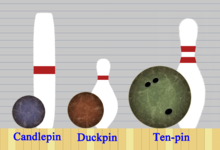
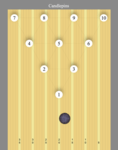
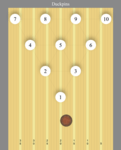
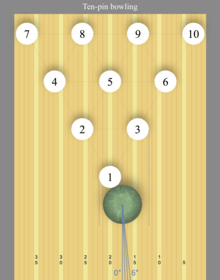
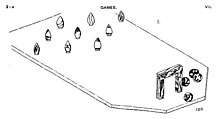
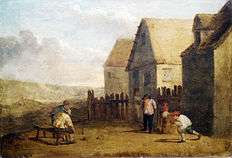
.png)
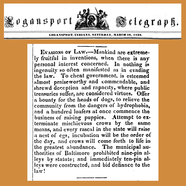
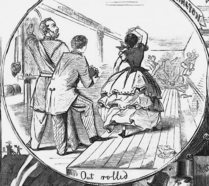
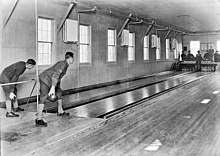
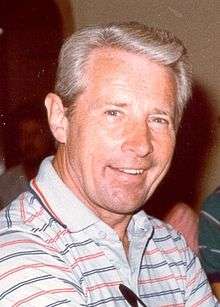
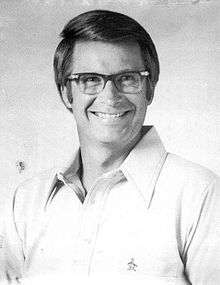
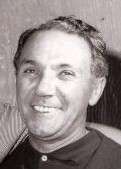
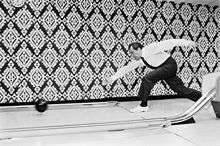
.jpg)